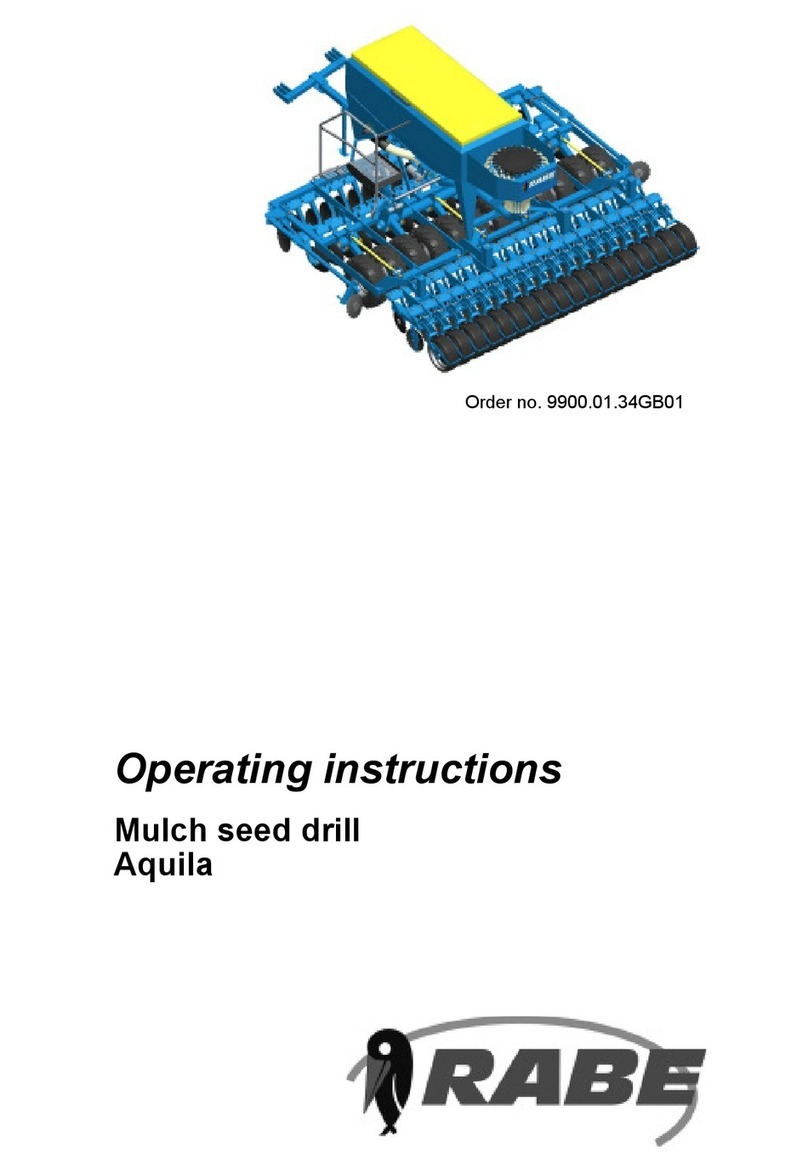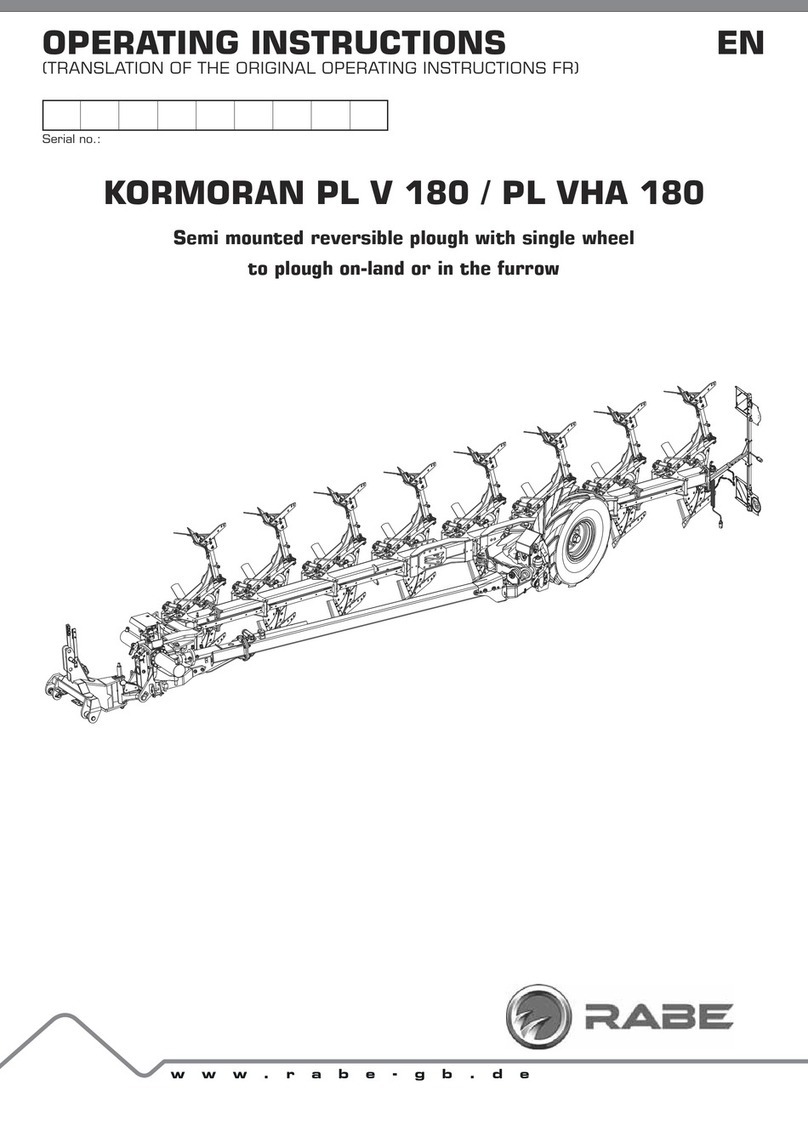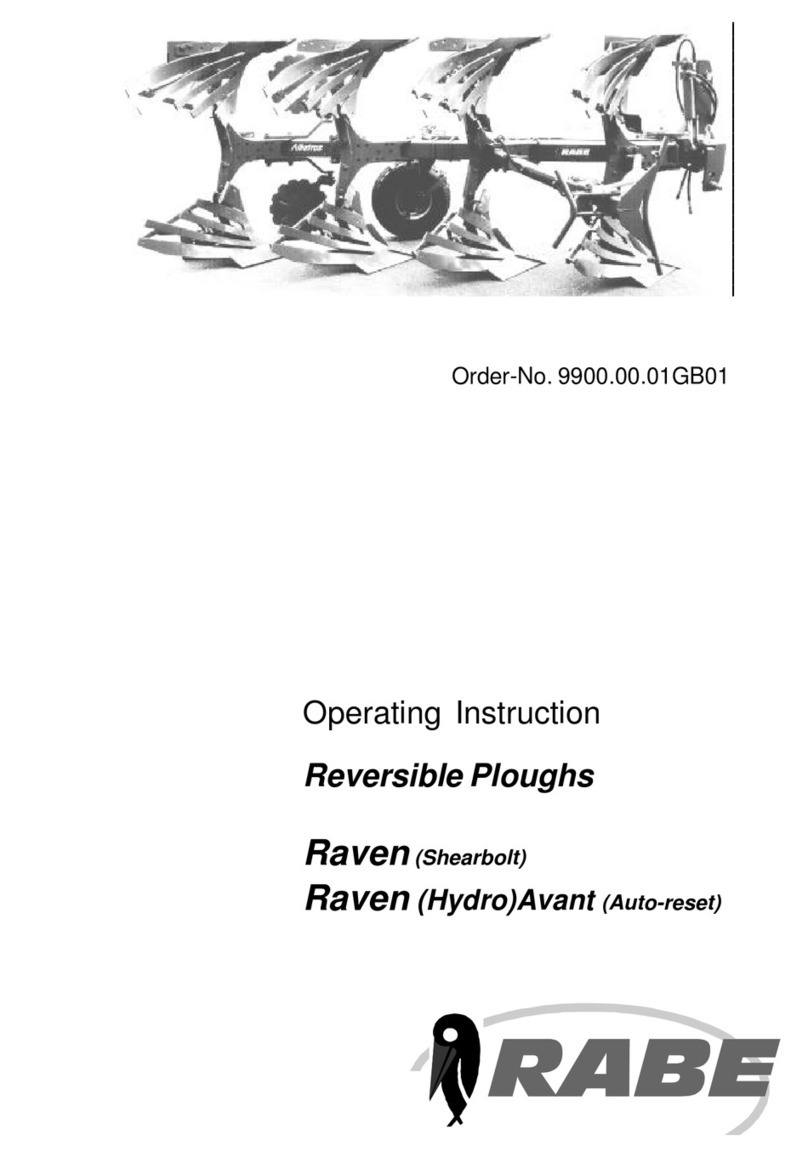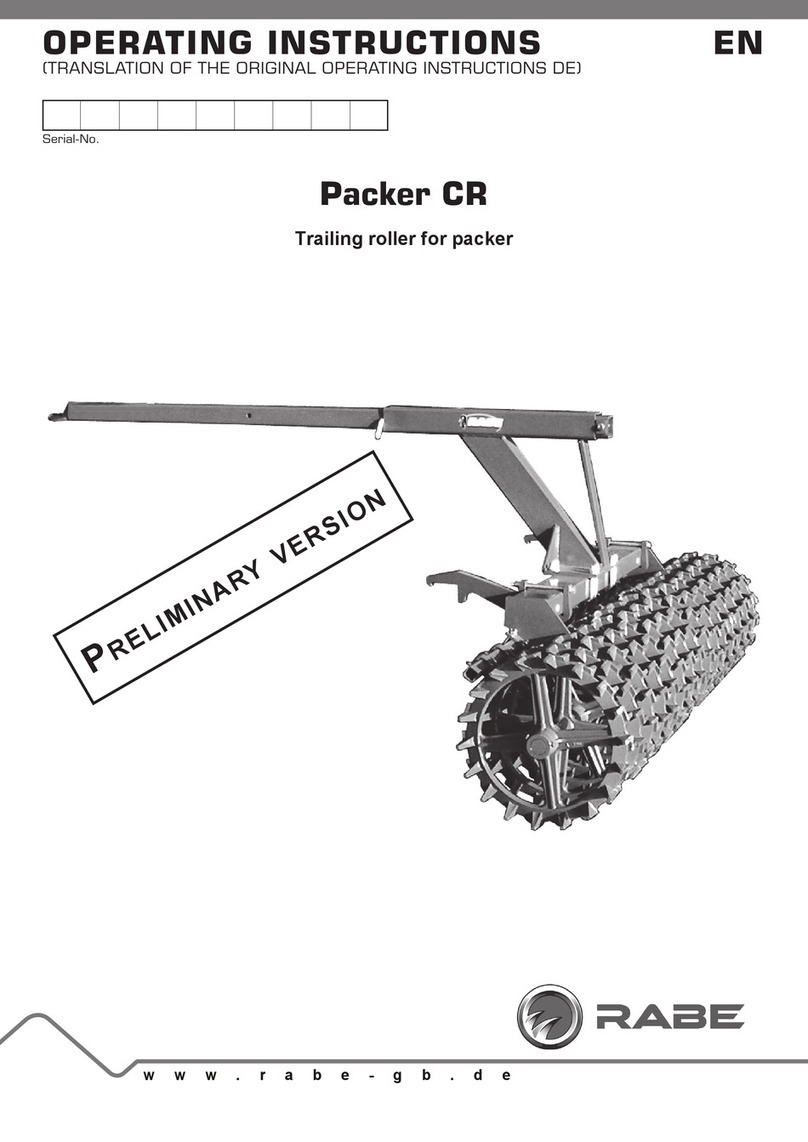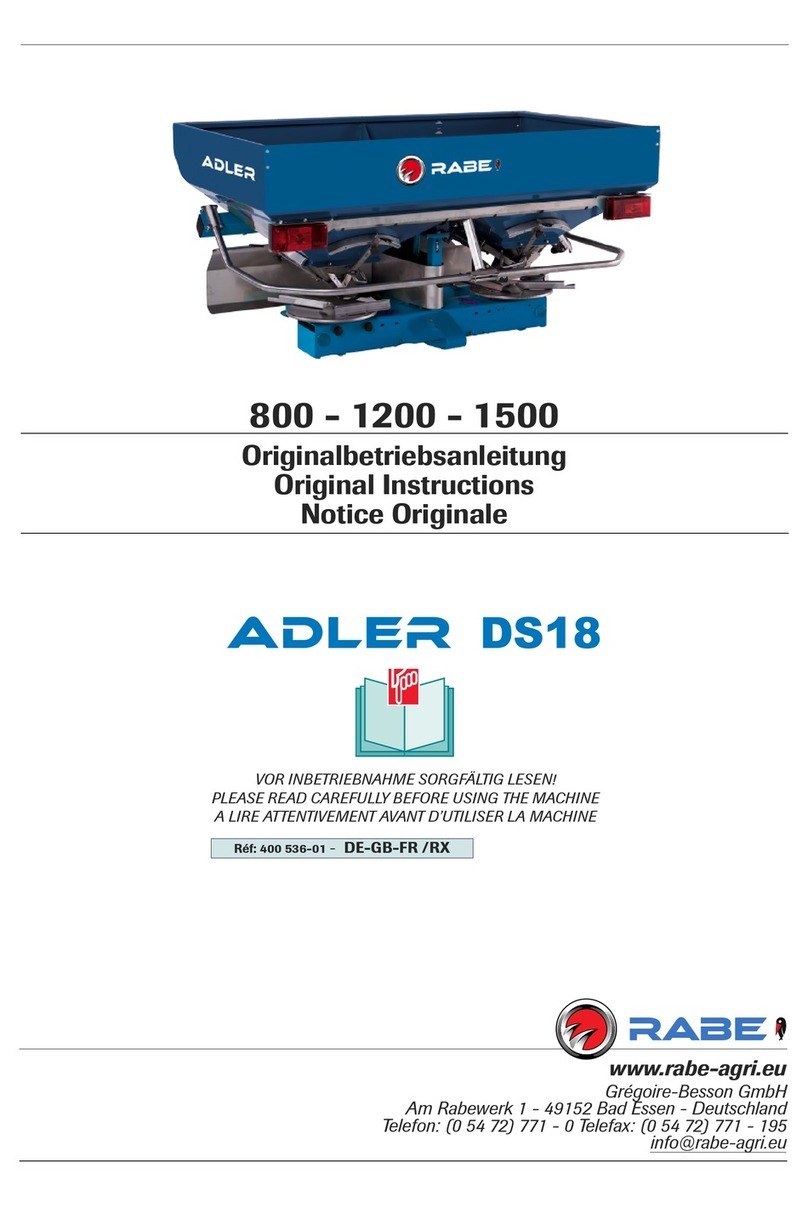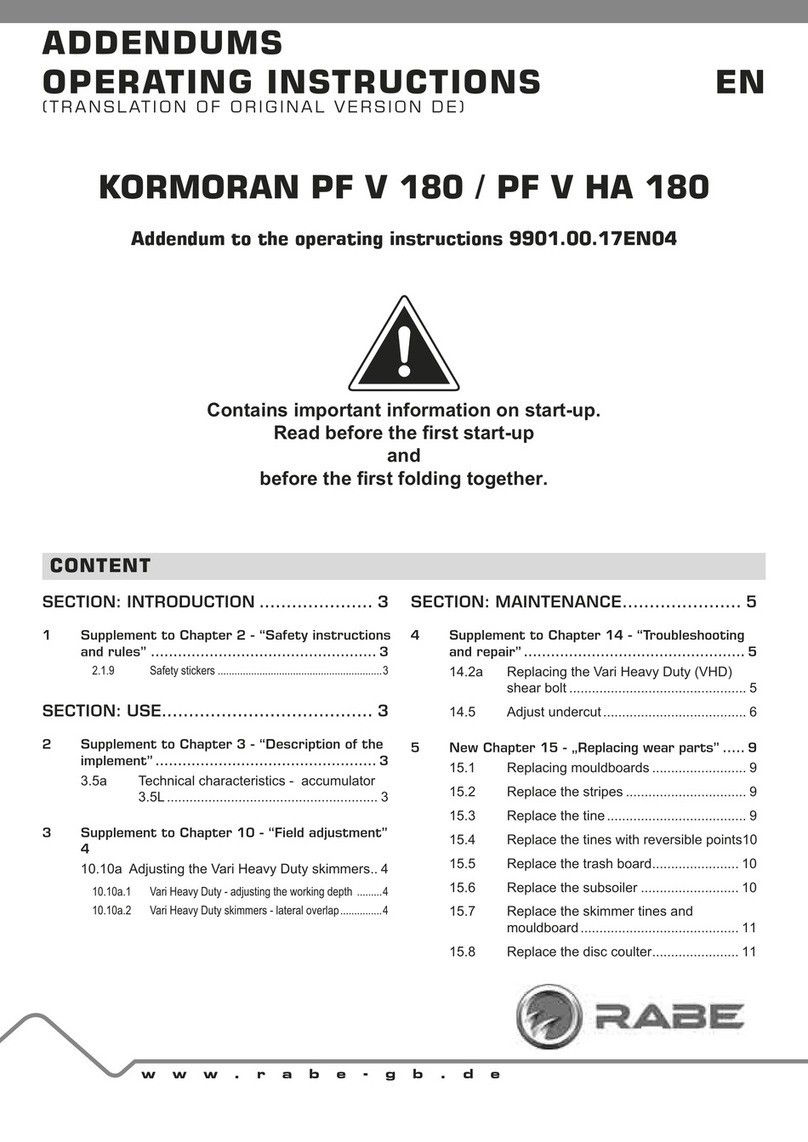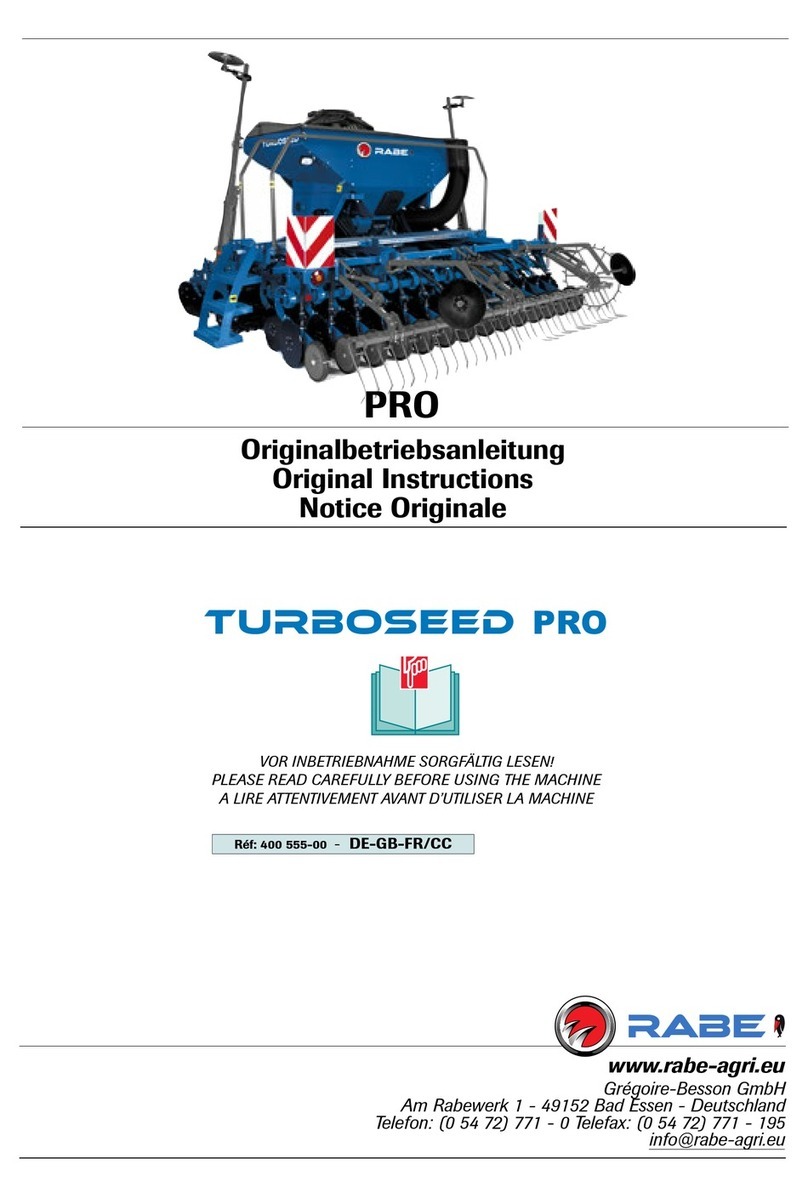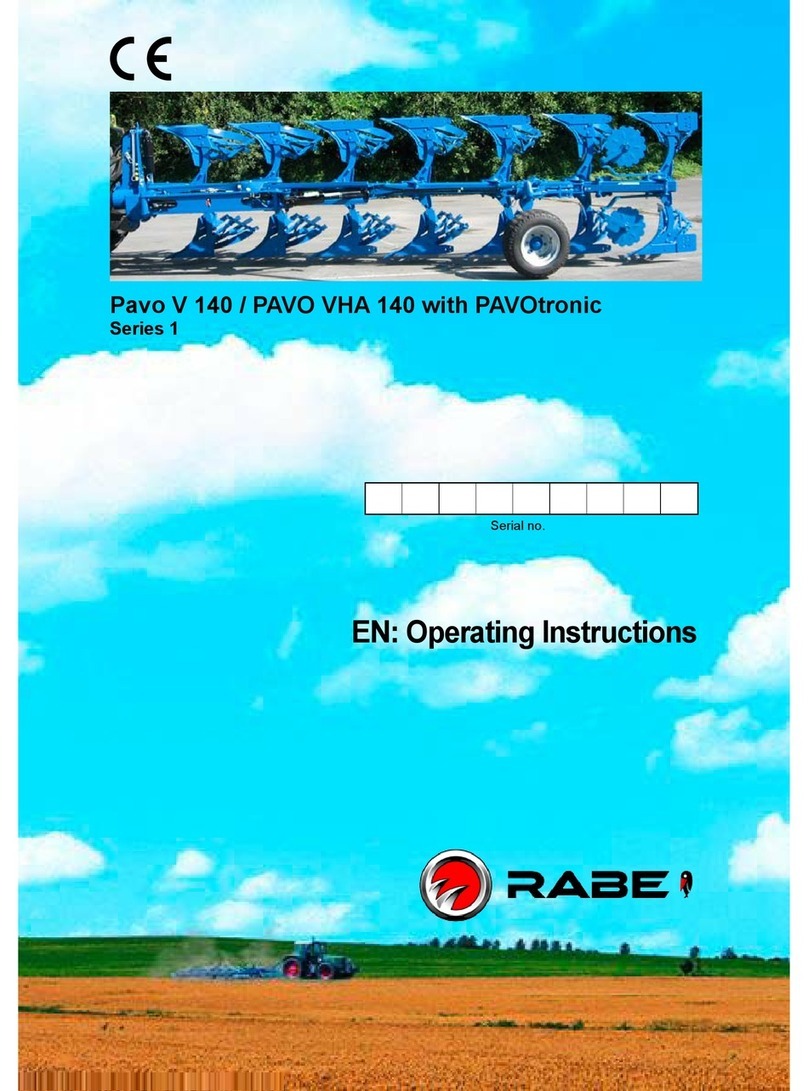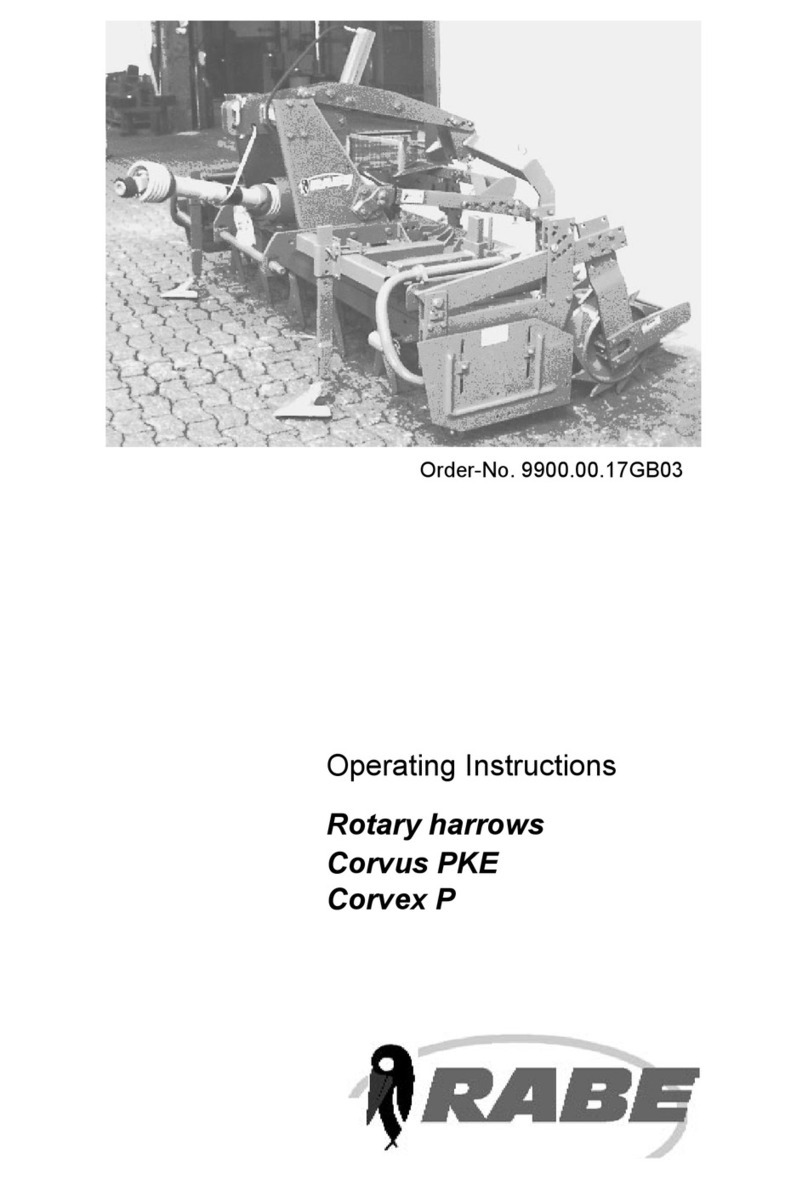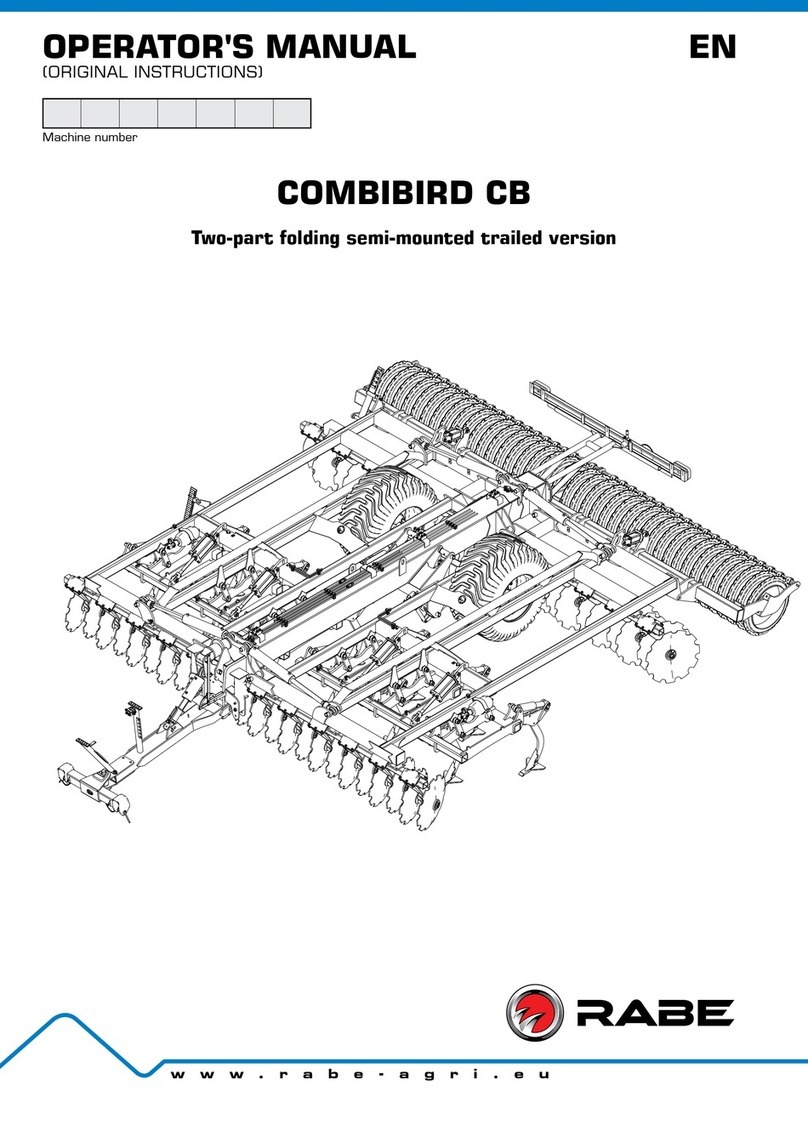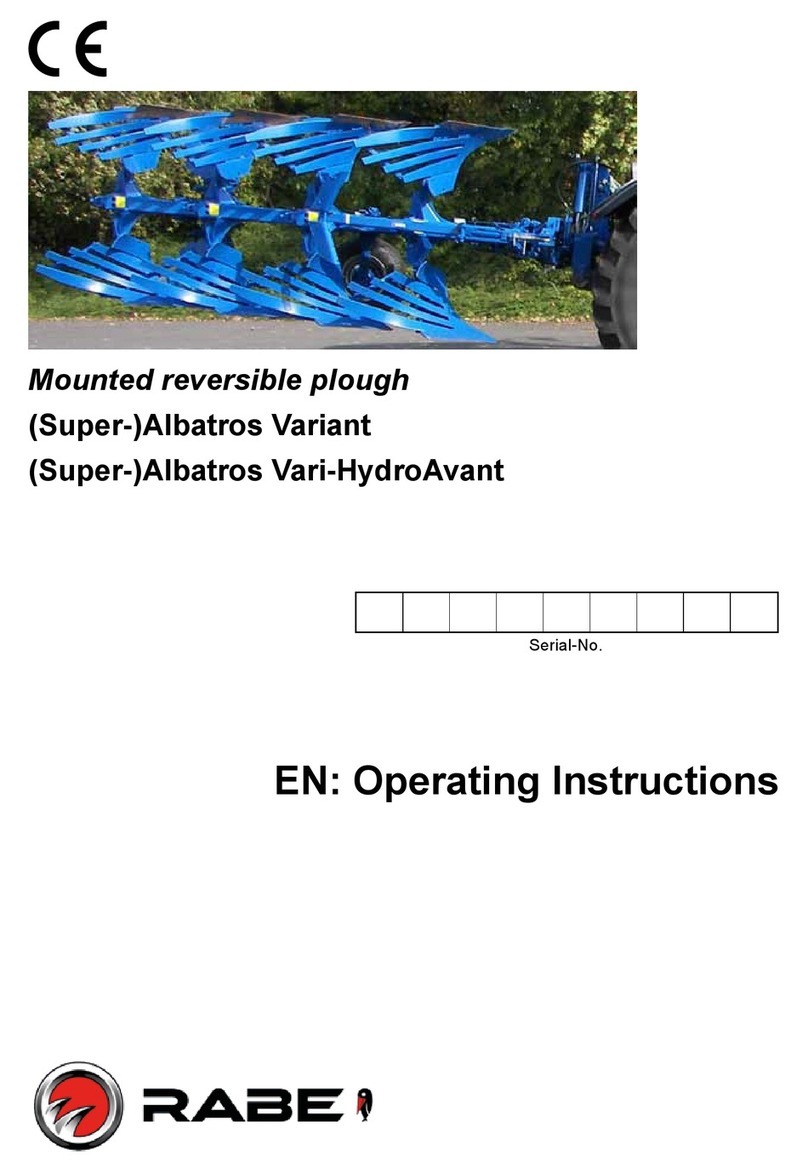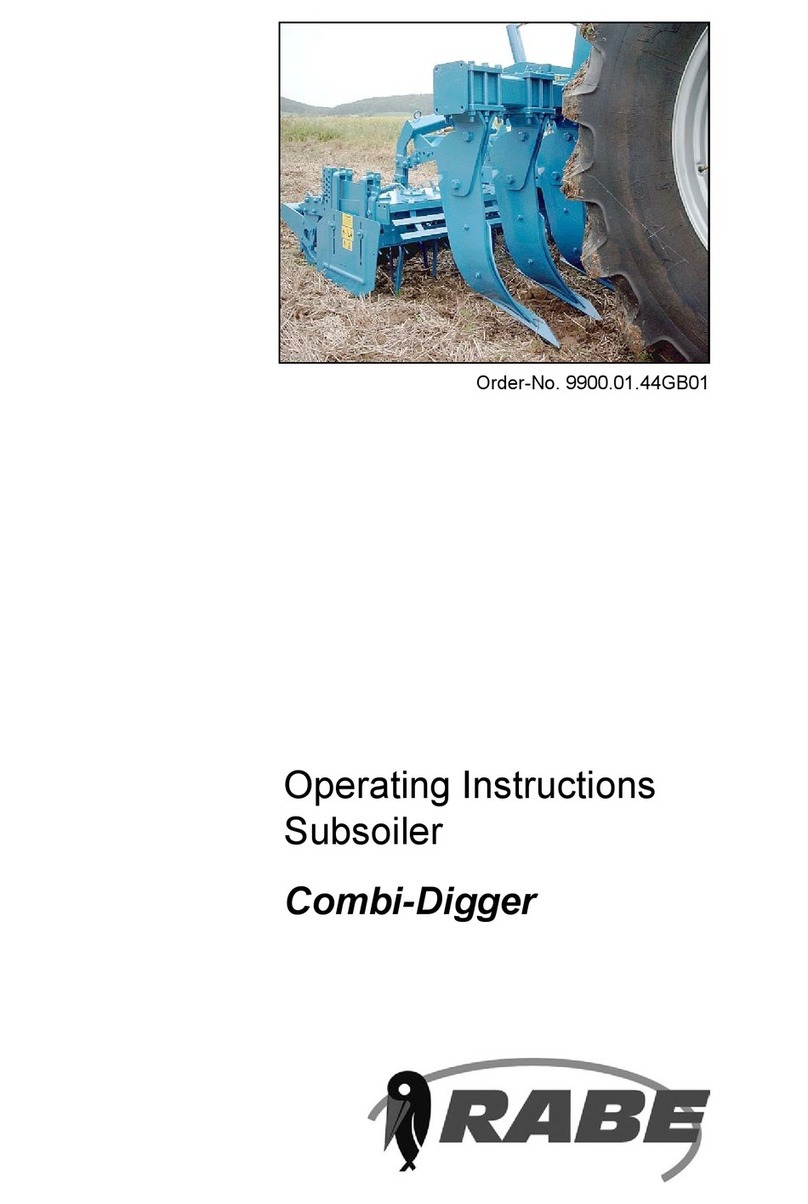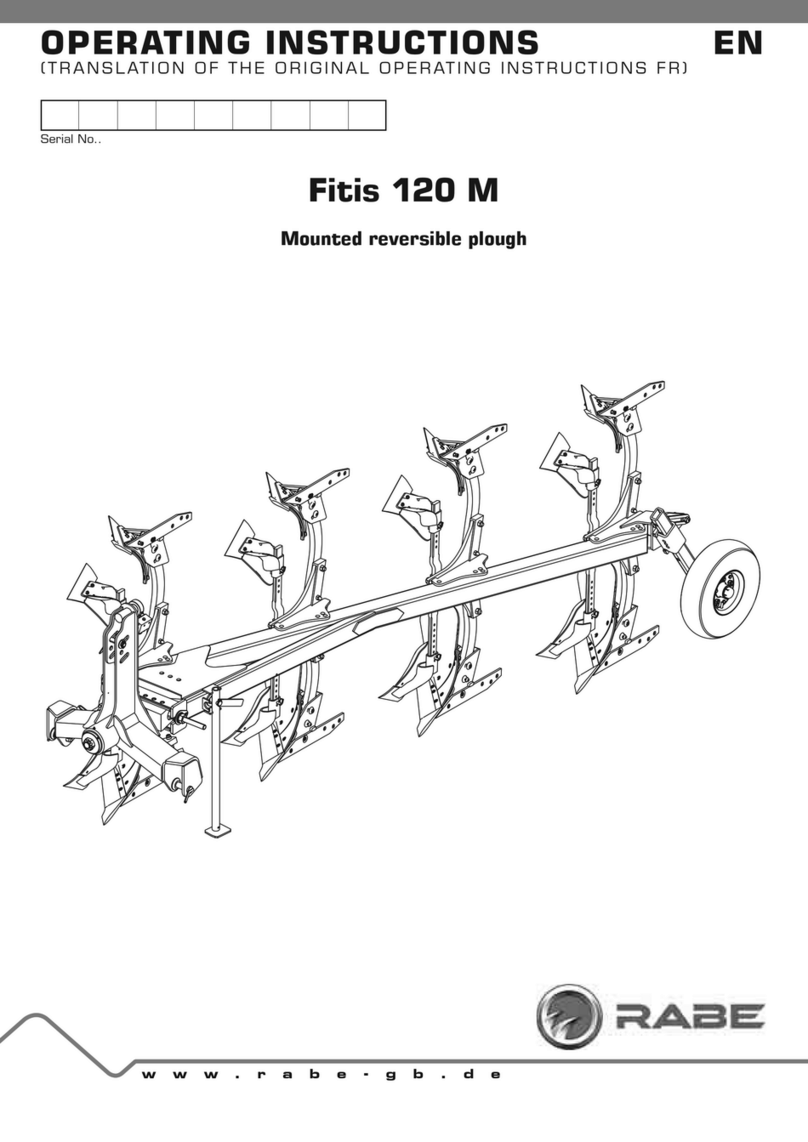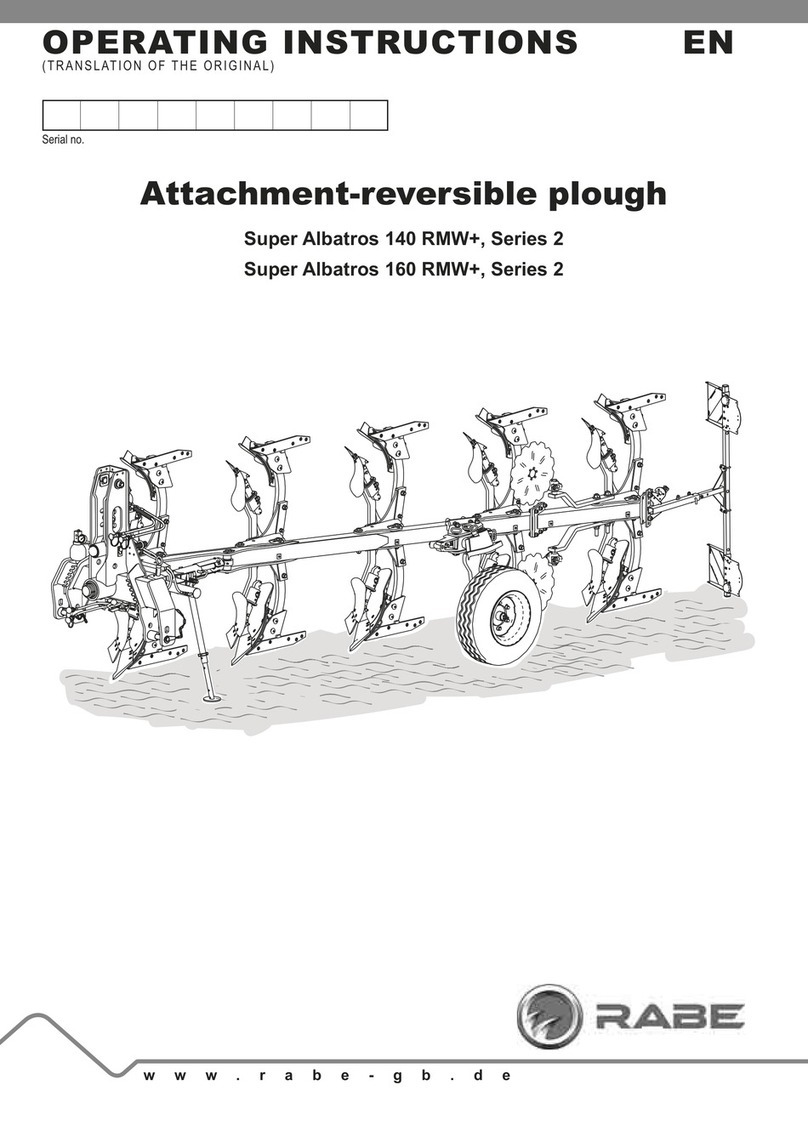
- 5 -
TABLE OF CONTENTS
9901.00.21EN01 - 02/2017
Reproduction in whole or partial copies of this manual, regardless of the country, form or medium is strictly prohibited without the written consent of Grégoire-Besson.
INTRODUCTION
1 Instructions..................................................7
1.1 Product documentation .......................................7
1.2 Explanation of symbols ........................................7
1.3 Regulations and legal provisions ...........................7
1.3.1 CE label ......................................................7
1.4 Identification of your equipment ...........................7
1.4.1 Type plate ...................................................7
1.4.2 Location of type plate ..................................7
1.4.3 Identification of your equipment ....................7
1.5 Associated documents ........................................7
2 Safety instructions and rules .........................8
2.1 Safety instructions .............................................8
2.1.1 General instructions ....................................8
2.1.2 Operator qualification ..................................8
2.1.3 Hitching and unhitching the implement...........8
2.1.4 Hydraulic circuit and couplings......................8
2.1.5 Use of the implement ...................................8
2.1.6 Transport on the public highway ....................9
2.1.7 Maintenance ...............................................9
2.1.8 Loading and unloading ..................................9
2.1.9 Safety stickers..........................................10
USE
3 Description of the implement ....................... 12
3.1 General views...................................................12
3.2 Technical specifications .....................................13
3.3 Technical characteristics - solid body..................13
3.4 Technical characteristics - slatted body ..............14
3.5 Technical characteristics - accumulator 0.75L ...14
3.6 Technical characteristics - accumulator 3.5L .....14
3.7 Dimensions and weights ....................................14
3.8 Rack and pinion assembly ..................................15
3.9 Offset compass ................................................15
3.10 Hydraulic weight transfer control (optional).........16
3.11 The "Z" beam ....................................................16
3.12 Extensions (optional) .........................................17
3.13 The wheel unit ..................................................17
3.14 Working width ..................................................18
3.15 Mould board .....................................................18
3.16 Ploughshare .....................................................19
3.17 Fin coulter (Optional).........................................19
3.18 Deflector (Optional) .........................................19
3.19 Disc coulter [optional] .......................................19
3.20 Safety devices..................................................19
3.20.1 Mechanical safety device............................19
3.20.2 "Hydro Avant" hydraulic safety device
(optional) ..................................................20
3.21 Lighting and signals...........................................20
4 Preparing the tractor..................................21
4.1 Required tractive power ....................................21
4.2 Tractor wheels .................................................21
4.2.1 Tractor tyres ............................................21
4.2.2 Tyre spacing............................................21
4.3 Ballasting the tractor .......................................21
4.4 Length of the lifting links ...................................22
4.5 Position of the stabilisers..................................23
4.6 Top link. ...........................................................23
5 Hitching and unhitching ...............................24
5.1 Hitching the implement to the tractor ................24
5.1.1 Tractor equipped with link arms with fixed ball
joints........................................................24
5.1.2 Tractor equipped with link arms with removable
ball joints ..................................................24
5.1.3 Releasing the latch ....................................24
5.1.4 Hitching the top link...................................25
5.1.5 Electrical connection of the signalling
equipment.................................................25
5.1.6 Hydraulic connections ................................25
5.1.7 Position of support legs .............................25
5.2 Locking and unlocking the turnover mechanism ....26
5.3 Unhitching the implement from the tractor .........27
5.3.1 Decompression kit .....................................27
6 Hydraulic connections ................................. 28
6.1 Required hydraulic control valves .......................28
6.2 Max. hydraulic ..................................................28
6.3 Hydraulic connections .......................................28
6.4 Function selector (optional)................................29
6.4.1 Installing the function selector....................29
6.4.2 Electrical connections of the solenoid valves 29
6.4.3 Using the function selector ........................30
6.4.4 Special characteristics of the selector ........30
7 Preparation of the implement before work..... 31
7.1 Locating the adjustment points ..........................31
7.2 Adjustment of the working width of the 1st body
(offset) ............................................................32
7.3 Wheel angle adjustment.....................................32
7.4 Calibration of non-stop hydraulic safety devices...33
7.5 Offset adjustment
(width of 1st furrow) ..........................................34
7.6 Installing the subsoiler (optional) ........................35
7.7 Transport and working depth adjustment wheel ...36
7.7.1 Tyre pressures ..........................................36
7.7.2 Tightening of wheel studs ...........................36
8 Changing between transport and working
position...................................................... 36
8.1 Changing to transport position...........................36
8.2 Changing to working position..............................38
8.3 Driving on the road ...........................................39
9 Field adjustment .........................................40
9.1 Use in the field .................................................40
9.2 First pass ........................................................41
9.2.1 Opening the offset compass .......................41
9.2.2 Working depth adjustment..........................41
9.2.3 Ground work .............................................41
9.2.4 Inclination adjustment ................................41
9.3 Second pass.....................................................42
9.3.1 Longitudinal levelling ..................................42
9.3.2 Lateral levelling .........................................42
9.3.3 Tractor pressure control adjustment ...........43
9.3.4 Offset adjustment (width of 1st furrow) ........43
9.4 Adjusting the hydraulic compensation cylinder
(optional)..........................................................43
9.5 Agricultural work in the field - adjusting the settings
44
9.5.1 Safety during operations ............................44
9.5.2 Working instructions..................................44
9.5.3 Adjustments while working .........................44
6XEMHFWWRWHFKQLFDOPRGL¿FDWLRQV

